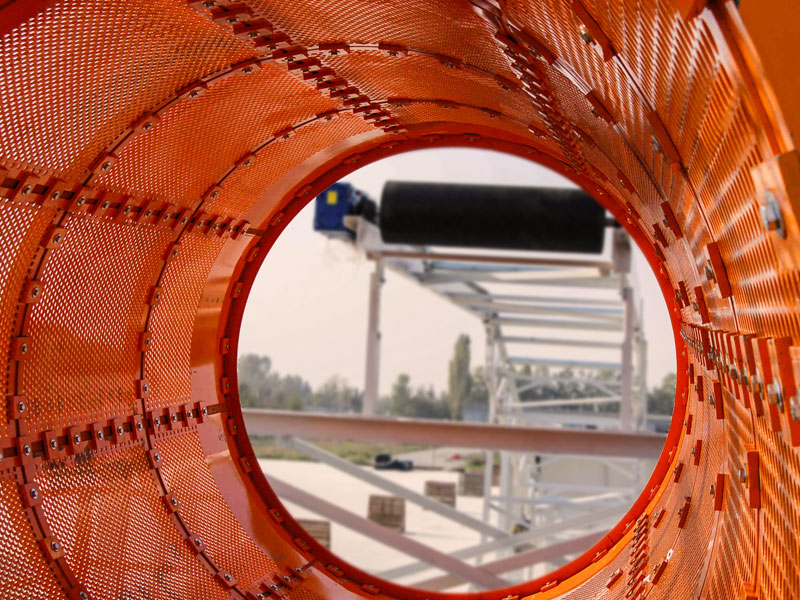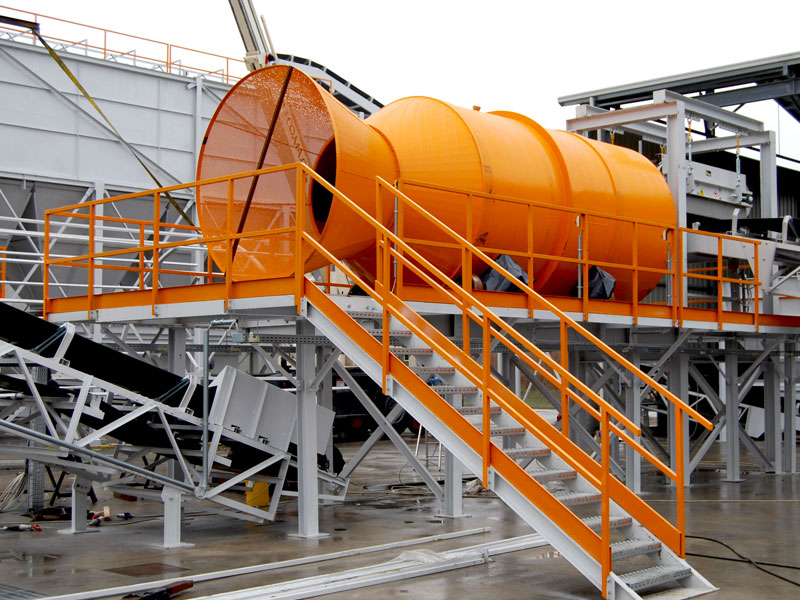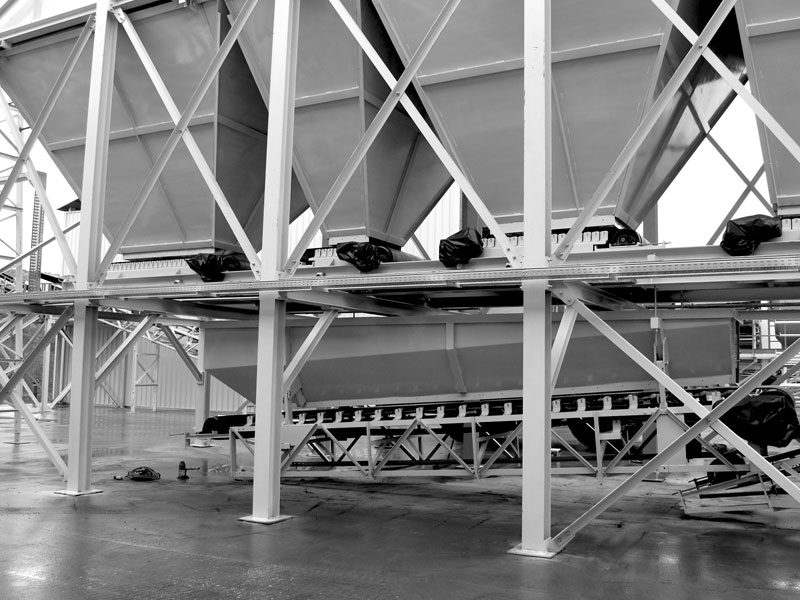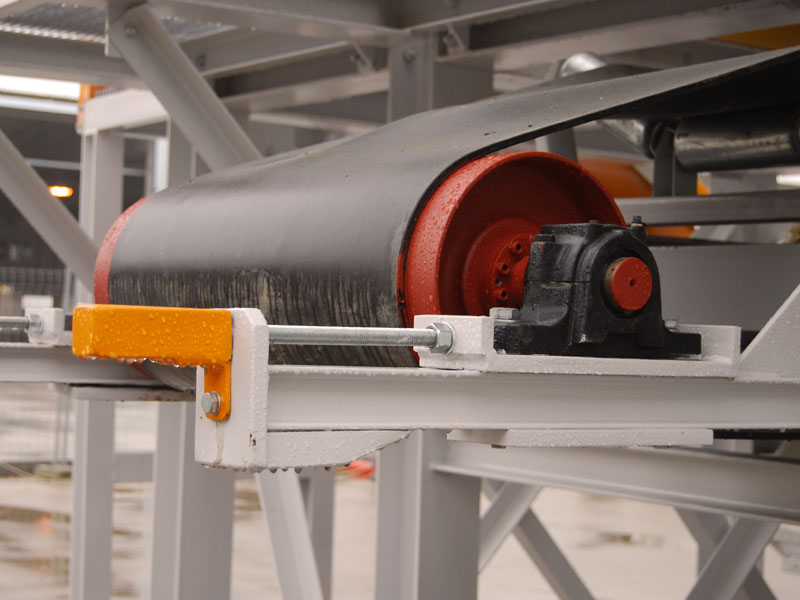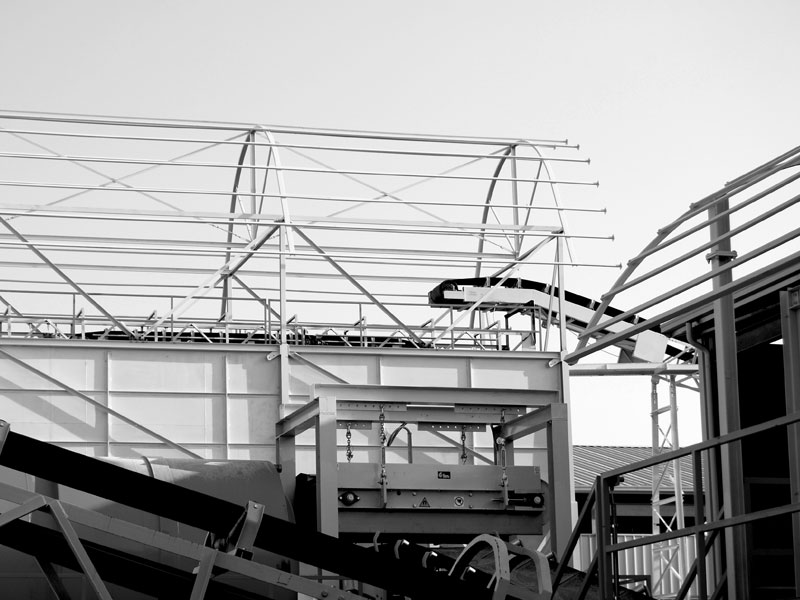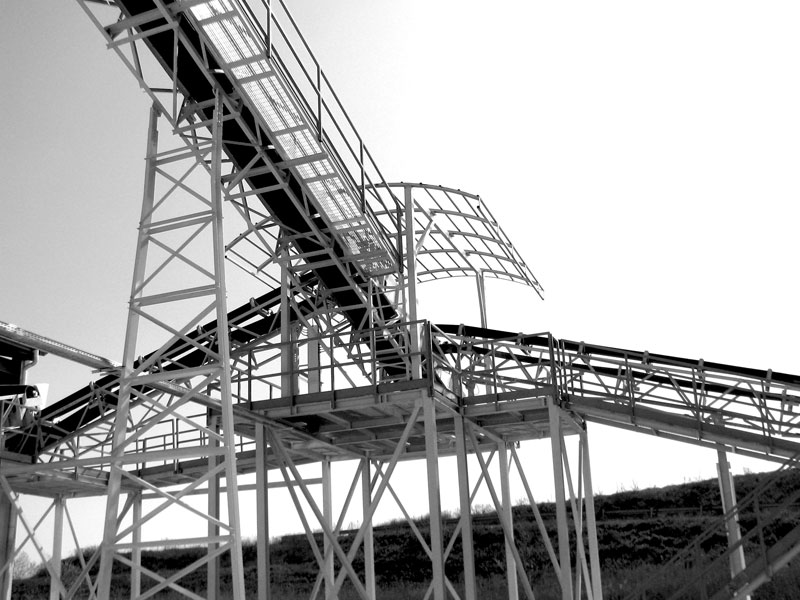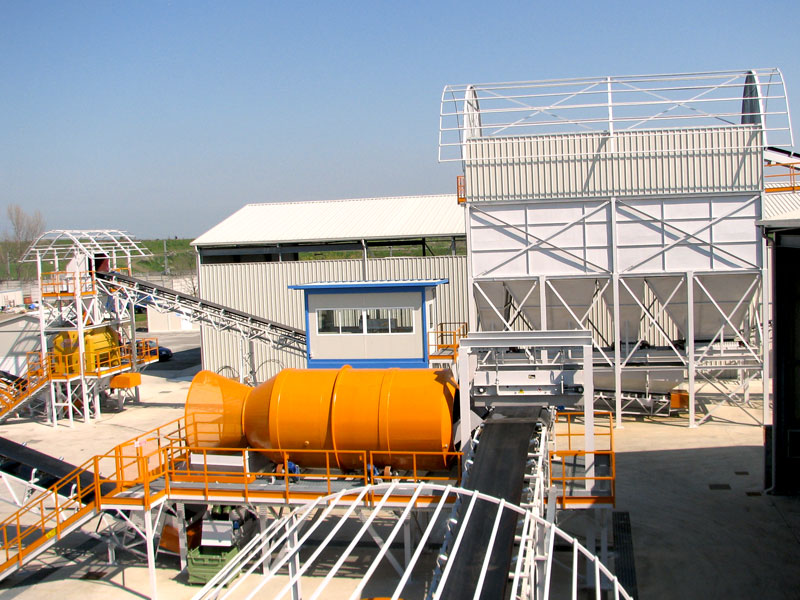Aggregate plant
Designed for the processing, handling, and treatment of aggregate materials
An aggregate plant is an industrial facility designed to process, handle, and treat aggregate materials, such as sand, gravel, crushed stone, clay, and other aggregates used primarily in construction. These plants are essential for producing high-quality building materials, such as concrete, asphalt and mortars, and can also be used for crushing and recycling demolition materials.
The plants for inert materials consist of rubber conveyor belts of various sizes, screening machines, storage silos complete with material weighing, mixing machines, material washing tanks, mechanical extractors. The automated configuration and the use of robust machinery allow to process large volumes of material in short times. Precise control of the crushing, classification and washing process ensures that the materials produced are of high quality and comply with the required standards. The plants can be configured to handle different types of aggregates, offering flexibility to companies.
Feeding and Loading Systems:
Loading Hoppers:
Hoppers are used to receive and accumulate aggregates coming from trucks or mechanical shovels. They are equipped with regulation systems to control the flow of materials towards the conveyor belts.
Conveyor Belts:
Suitable for handling cellulose in powder or small pieces, ensuring a continuous and controlled flow.
Crushing Plant:
Primary and Secondary Crushers:
These machines are used to reduce the size of inert materials, transforming them into aggregates of specific dimensions. Primary crushers process the larger blocks, while secondary and tertiary crushers further reduce them.
Mills and Grinders:
Used to obtain finer grain sizes or for specific materials, such as sand.
Sieving and Classification Systems:
Vibrating Screens:
These systems separate aggregates based on their size. Vibrating screens are equipped with screens with different openings to achieve precise classification of aggregates.
Dry or Wet Classifiers:
Used to separate fractions of materials based on size and density. Wet classifiers use water to improve the separation of fine materials such as sand and clay.
Washing Systems:
Drum or Screw Washers:
These machines wash aggregates to remove clay, dust and other impurities, improving the quality of the final aggregates.
Systems Water Recovery:
The water used in the washing process is recovered and treated to reduce environmental impact and operating costs.
Storage and Batching Plants:
Storage Silos and Bunkers:
Treated inert materials are stored in silos or bunkers, ready to be used in other processes or sold.
Batching Systems:
Used to accurately measure the amount of material needed to produce concrete, asphalt or other products.
Recycling Plants:
Demolition Material Crushers:
Used for recycling inert materials from demolitions, transforming them into reusable aggregates.
Metal Separation:
Magnets and eddy current separators are often integrated to remove ferrous and non-ferrous metals from recycled materials.
Automation and Control:
Management Software:
The entire plant is often managed by software that controls the flow of materials, optimizes processes, and monitors performance in real time.
Sensors and Monitoring:
Integrated sensors detect material grade, grain size, belt speed, and other critical parameters, ensuring optimal and safe operation.
Aggregate plants are typically designed for concrete production, in particular the supply of high-quality aggregates needed for production, road construction, for the production of gravel and aggregates for road construction and maintenance, demolition material recycling, in particular the processing and reuse of construction materials for new projects and asphalt industry for the supply of specific aggregates for asphalt production.



